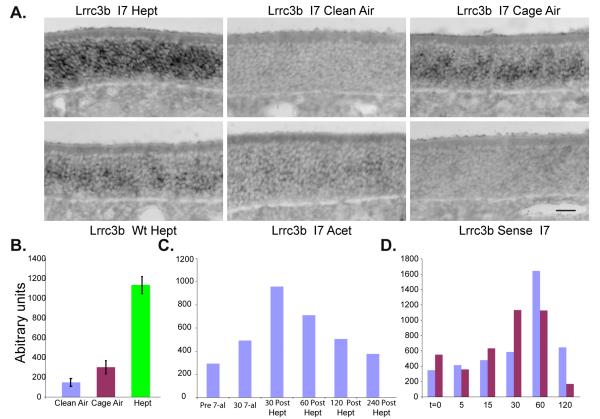Figure 5.
Lrrc3b is regulated by odorant-evoked activity. (A) Lrrc3b in situ hybridization on OE tissue sections from UbI7 mice housed in different odor conditions. The Lrrc3b signal observed in the normal odor environment (Cage Air) is lower than the mRNA levels after heptaldehyde (Hept) exposure (30 min). Prolonged maintenance in a clean air environment (Clean Air) for 24 hr reduced Lrrc3b signal. Stimulation of UbI7 mice with acetophenone (Acet) or wild type mice with heptaldehyde supports the stimulus specificity of the signal. scale bar = 25 microns (B) Changes in Lrrc3b mRNA in UbI7 mice using the paradigm described in (A) with the I7 ligand heptaldehyde (Hept) were quantified by quantitative RT-PCR. Values reflect the independent measurement of RNA from mice (n=3) exposed to each condition. (C) The rate of recovery of Lrrc3b mRNA levels after a 30 minute heptaldehyde exposure and return to clean air was determined by RT-PCR at time points from 30 to 240 minutes. Results from a representative experiment are shown. (D) Under conditions of constant heptaldehyde exposure, Lrrc3b mRNA levels return to baseline within 120 minutes. Data obtained from two representative experiments are presented.

